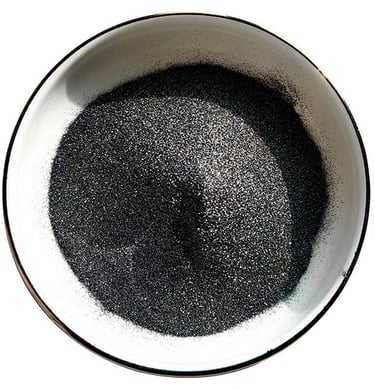HENAN YUMO: Engineered Precision, Uncompromised Performance
Black Silicon Carbide vs. Green Silicon Carbide: A Comprehensive Comparison
White vs. Brown Fused Alumina: Compare purity (99.5% vs. 94% Al₂O₃), hardness (Mohs 9.0 vs. 8.8), and applications in precision grinding vs. heavy-duty abrasives. Make an informed choice for your industry.
5/19/20252 min read


Introduction to Silicon Carbides
Silicon carbide (SiC) is a compound that has gained significant attention in various industries due to its impressive properties and versatility. Among the different variations of silicon carbide, black and green silicon carbide are two widely used types, each possessing unique attributes that make them suitable for specific applications. This article aims to highlight the key differences and applications of black silicon carbide and green silicon carbide.
Black Silicon Carbide
Black silicon carbide is produced by the carbothermic reduction of silica in an electric arc furnace. Characterized by its dark color, this type of silicon carbide contains a high percentage of silicon, making it suitable for heavy-duty applications. It is commonly used as an abrasive material due to its hardness and sharp particle structure, and it exhibits excellent thermal conductivity, leading to its use in high-temperature applications.
Some of the primary applications of black silicon carbide include grinding wheels, sandpaper, and various cutting tools. Additionally, it is employed in industries that focus on ceramics and refractory materials. The durability and resistance to wear make black silicon carbide a preferred choice for heavy industrial applications where toughness is essential.
Green Silicon Carbide
On the other hand, green silicon carbide is produced by a different method known as high-temperature electrolysis. This type of silicon carbide is recognized for its high purity and is predominantly used for producing semiconductors. Its lighter green color is indicative of its chemical and structural properties, making it distinct from its black counterpart.
Green silicon carbide is primarily used in manufacturing products that require high thermal resistance. This includes applications in the electronics sector, particularly in high-voltage devices and electronic components. Furthermore, it serves as an effective abrasive in applications such as lapping and polishing due to its finer particle size compared to black silicon carbide. This makes green silicon carbide an excellent choice for softer surfaces, providing superior finishing results.
Comparative Analysis
When comparing black silicon carbide to green silicon carbide, several factors come into consideration. The color is the most obvious difference, but the variations also extend to their mechanical properties and applications. Black silicon carbide’s toughness makes it ideal for industrial applications that require abrasive resilience, while green silicon carbide is favored in high-precision applications where purity and less abrasive action are required.
Additionally, the production process plays a crucial role in determining the applications of each type. Black silicon carbide tends to have a higher degree of porosity, which aids in its functionality as an abrasive, while the denser structure of green silicon carbide enhances its performance in electronic component manufacturing.
Conclusion
In summary, both black and green silicon carbide hold essential roles in their respective fields, stemming from their unique properties and advantages. Understanding the distinctions between these two variants is crucial for manufacturers and engineers to select the appropriate material for specific applications effectively. Whether it's the toughness of black silicon carbide or the purity of green silicon carbide, each type serves indispensable functions that highlight the versatility of silicon carbide as a whole.


